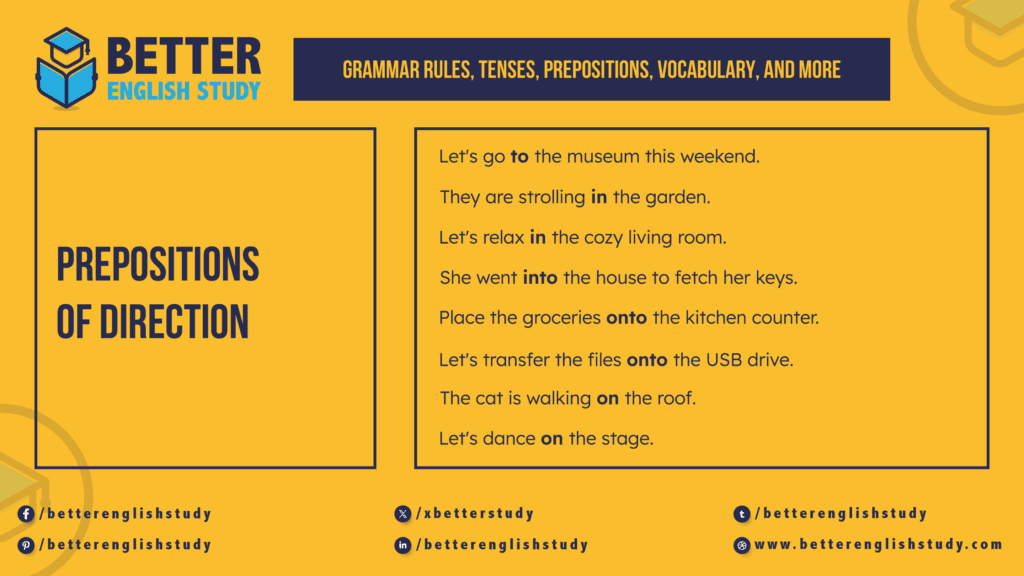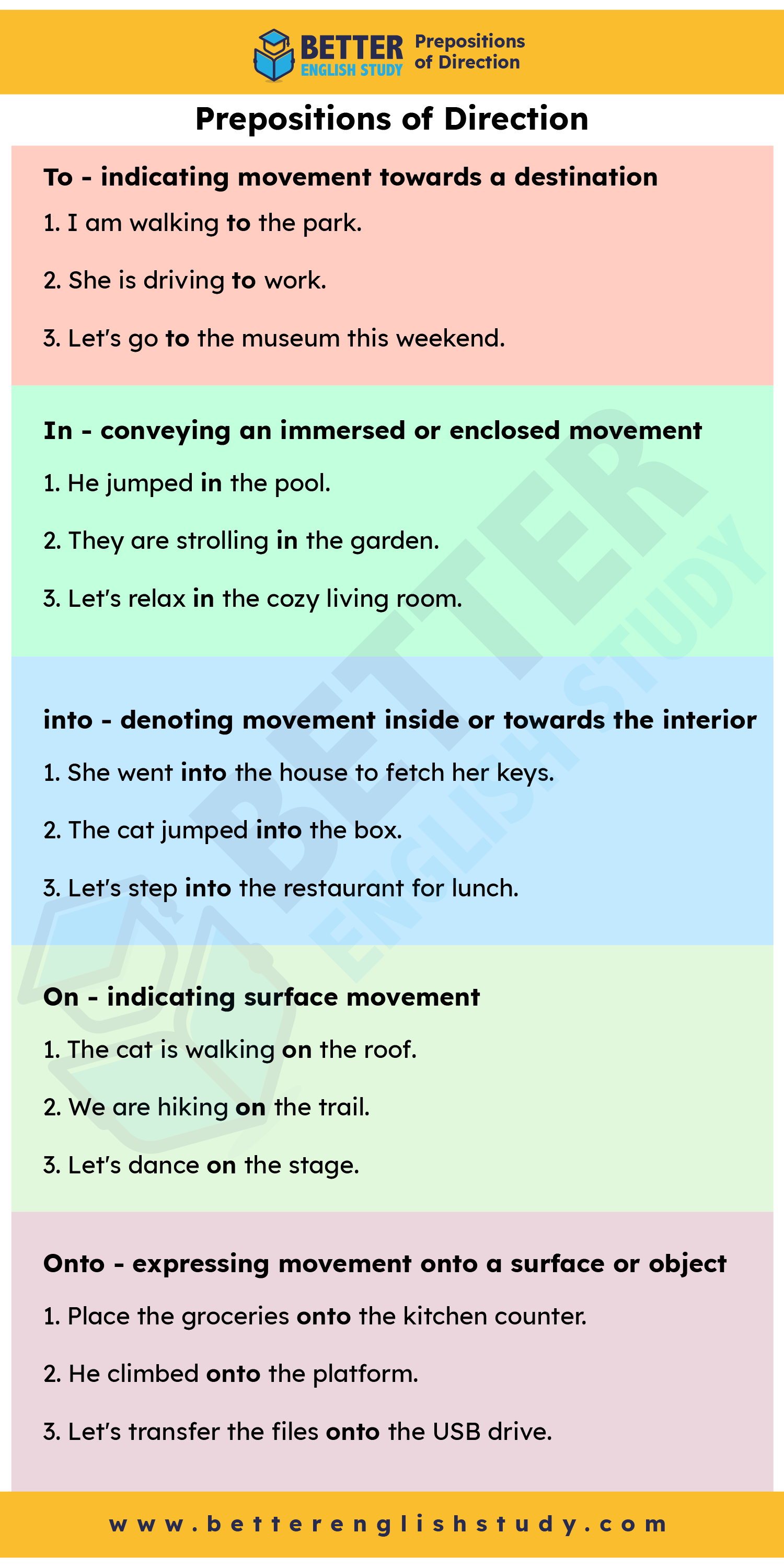
Prepositions are the building blocks of language, providing crucial information about the relationships between words.
When it comes to describing direction, prepositions like “to,” “in,” “into,” “on,” and “onto” play a pivotal role in guiding our expressions.
In this article, we will delve into the usage of these prepositions, exploring how they convey distinct nuances of direction in different contexts.
To – indicating movement towards a destination
The preposition “to” signifies movement towards a specific destination or goal.
Example sentences:
- I am walking to the park.
- She is driving to work.
- Let’s go to the museum this weekend.
In – conveying an immersed or enclosed movement
The preposition “in” describes movement within the confines of a space.
Example sentences:
- He jumped in the pool.
- They are strolling in the garden.
- Let’s relax in the cozy living room.
into – denoting movement inside or towards the interior
The preposition “into” emphasizes movement inside or towards the interior of an object or space.
Example sentences:
- She went into the house to fetch her keys.
- The cat jumped into the box.
- Let’s step into the restaurant for lunch.
On – indicating surface movement
The preposition “on” conveys movement along the surface of an object or space.
Example sentences:
- The cat is walking on the roof.
- We are hiking on the trail.
- Let’s dance on the stage.
Onto – expressing movement onto a surface or object
The preposition “onto” emphasizes movement onto a specific surface or object.
Example sentences:
- Place the groceries onto the kitchen counter.
- He climbed onto the platform.
- Let’s transfer the files onto the USB drive.

Prepositions of direction are essential tools in guiding our expressions of movement and location. By mastering the distinctions between “to,” “in,” “into,” “on,” and “onto,” we can articulate directions with clarity and accuracy.
Whether navigating through spaces or describing movement within them, a solid understanding of these prepositions enhances our ability to communicate effectively in diverse contexts.
